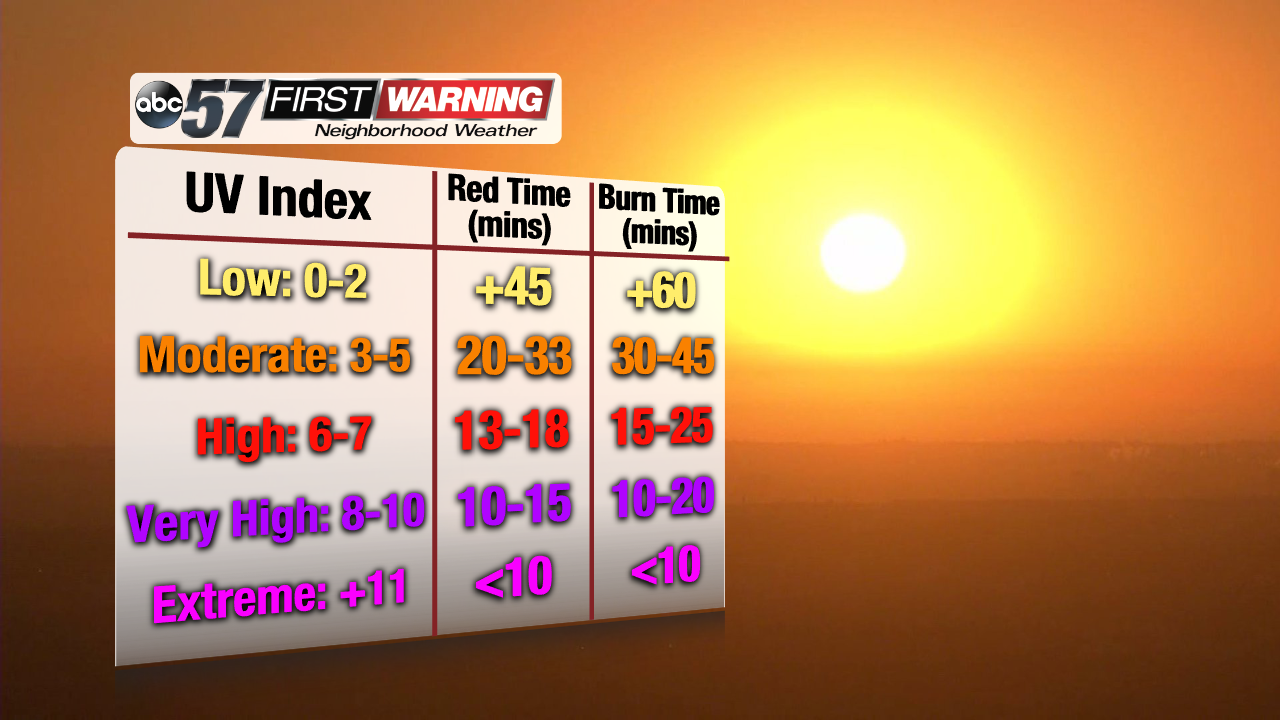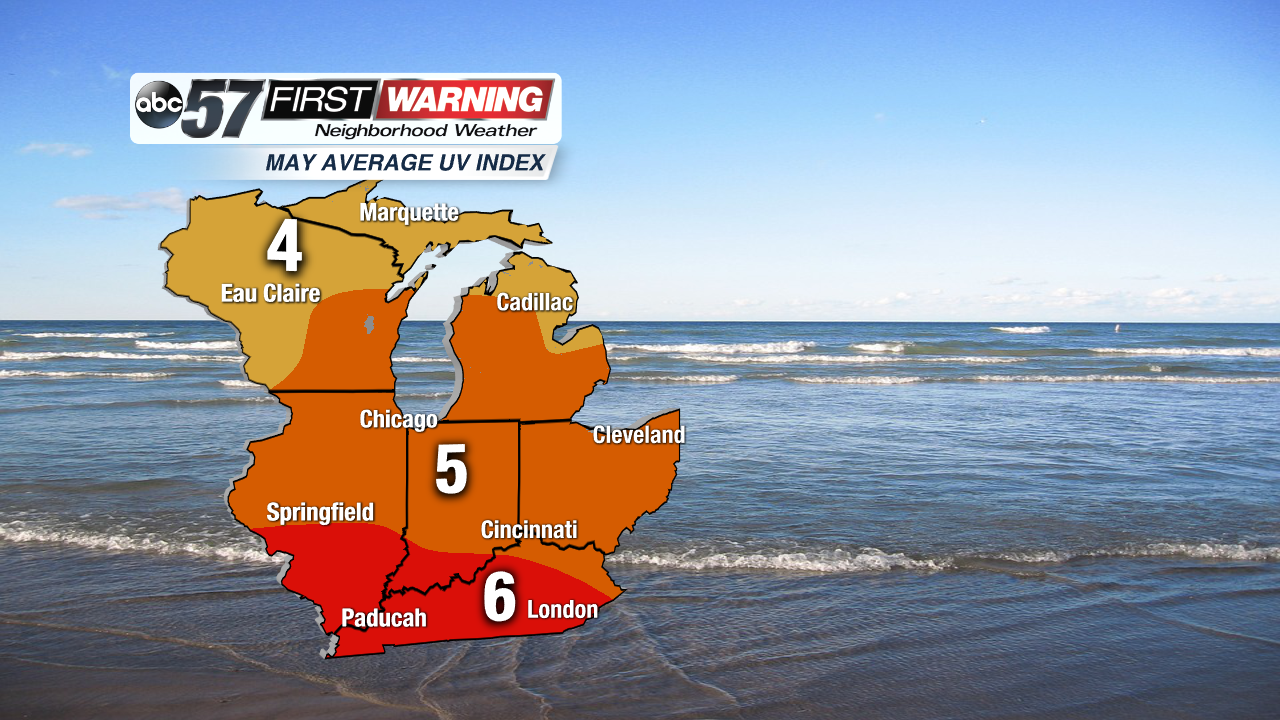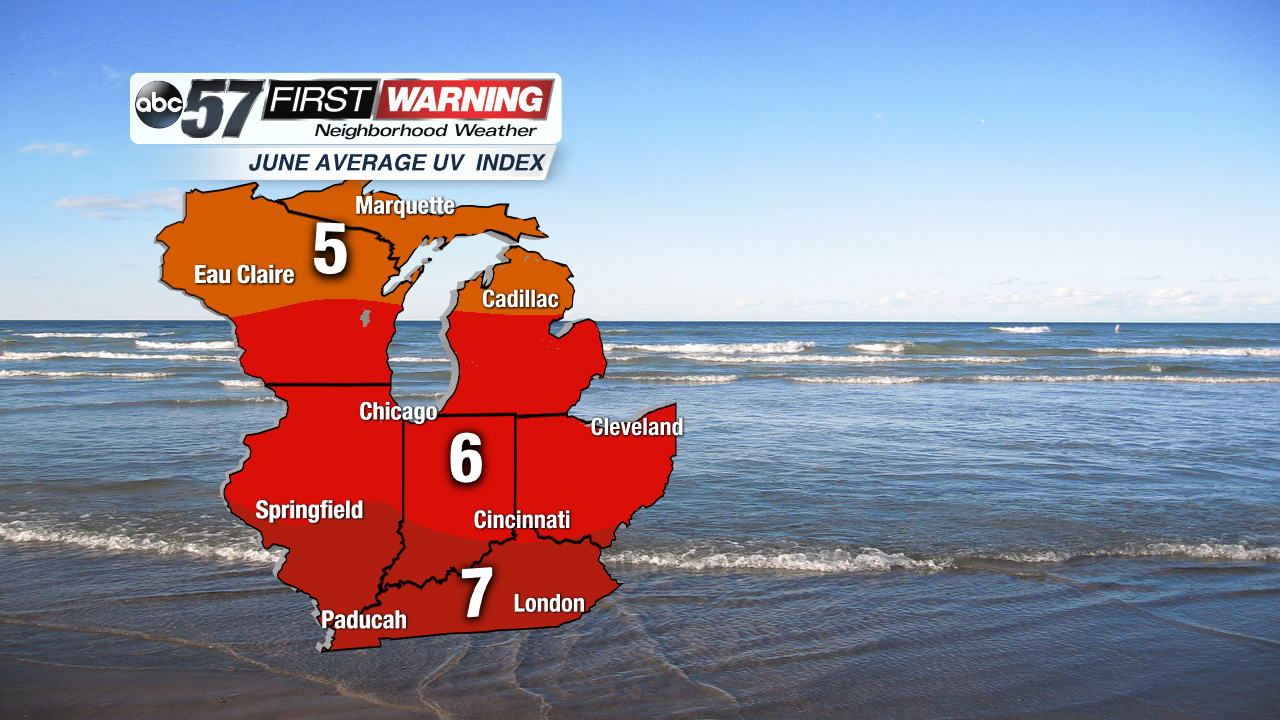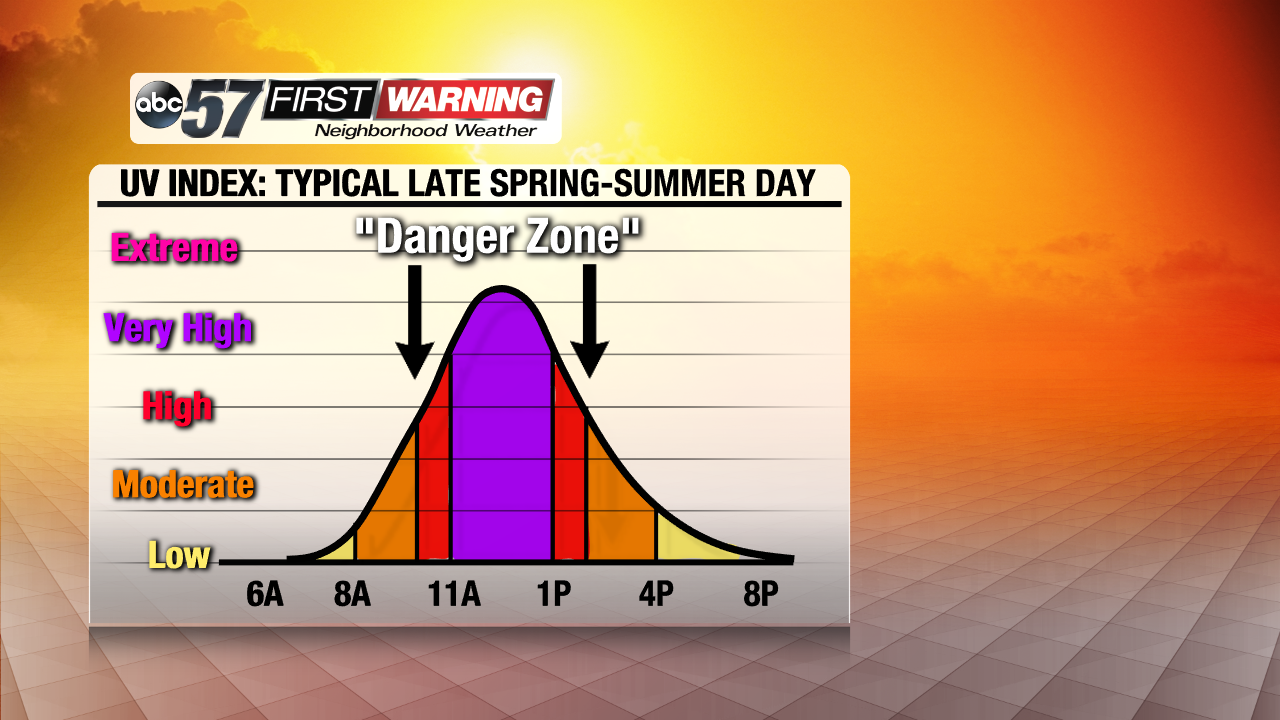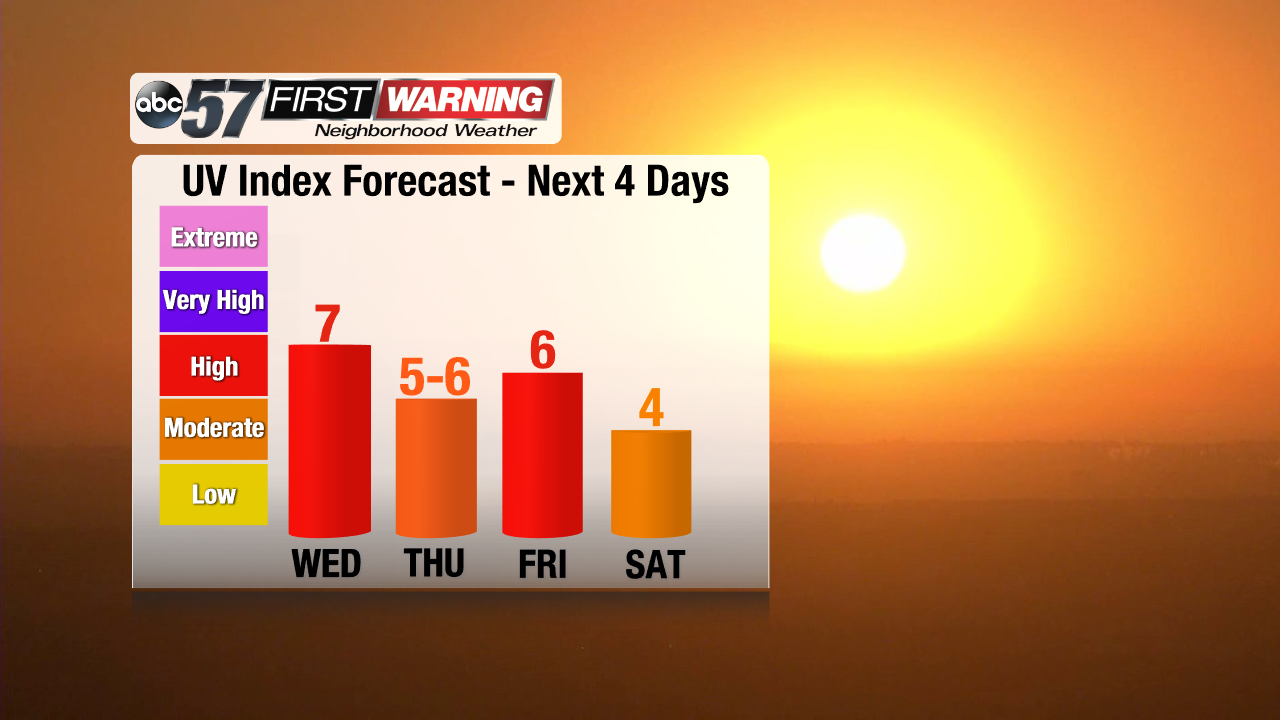It may only be late April, but the risk for sunburn is has returned to Michiana. And, if it's sunny enough, the risk is quite substantial. That's because the sun angle gets higher and higher throughout the spring months.
Late April thru early August is the stretch when the sun is actually at its strongest in the Midwest and Great Lakes. The absolute peak of the sun's intensity occurs in June, which is when the summer solstice happens. That's why sunburn happens more often during the late spring and early summer than any other time of year: the sun angle is significantly higher. The way we measure the risk of sunburn on a given day is with something called the UV index. The UV index is an international standard measurement of the strength of ultraviolet radiation that produces sunburn. The higher the value, the higher your risk of developing sunburn. For example, if the UV index on a given day is forecast to be a 10, your skin can burn in as little as 10-20 minutes. Fortunately, the UV index in Michiana doesn't get above that level all that often. We see maximum UV index values as high as 7 in April, as high as 8-10 in May, June and July, and as high as 7-8 in early August. Our average UV index value for a given month is lower, though. That's simply because each month's average UV index value (shown above) factors in an entire month's worth of data. Some days are cloudy and/or rainy. As a result, the UV index is substantially lower, typically in the 1-3 range. When you add the rainy days and sunny days together, we get our average UV index values for each month. For Michiana, they are in the 5-7 range from late April thru early August. That means a good amount of days will feature UV index values of 5, 6 or 7. That does not mean we can't see a significant amount of days with higher UV indexes. If we string together a week of sunny days in May, we will also have a week straight of dangerous UV index values. A completely sunny day in May, June or July will present a substantial risk for sunburn with UV indexes nearing 10. It's also important to remember that sunburn, even severe sunburn, can happen on partly cloudy days. Just because the sky isn't entirely sunny doesn't mean you aren't at risk for receiving a painful sunburn. It only takes having your unprotected skin exposed in direct sunlight for 15-30 minutes here in Michiana to get dangerous sunburn. Even days with more clouds than sun can bring with them the risk of sunburn.Something else to keep in mind is the time of day. According to experts, it's suggested that you avoid direct sunlight between 10 a.m. and 4 p.m. on sunny late spring and early summer days. The absolute worst time to be in the sun in the Great Lakes region is between 11 a.m. and 3 p.m. Your risk of sunburn is much higher during this window than during the morning or late afternoon hours.
Over the next several days, the UV index in South Bend is forecast to be in the medium or high category. Wednesday's "7" may be dropped as cloud cover looks to be increasingly likely. Friday's "6" may be upped to a "7" as sunshine is looking likely. Regardless, with values of 5+ the risk for sunburn is there. And it'll only get worse as we head into May and June. Some tips to protect yourself in the sun's harmful rays can be found here and here.














